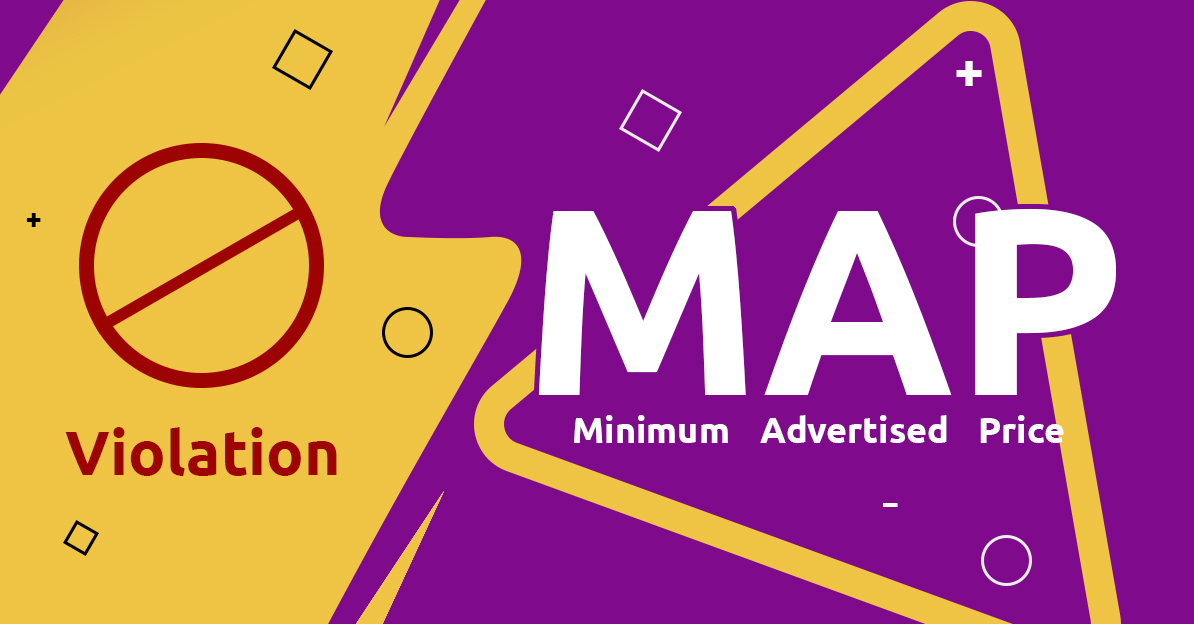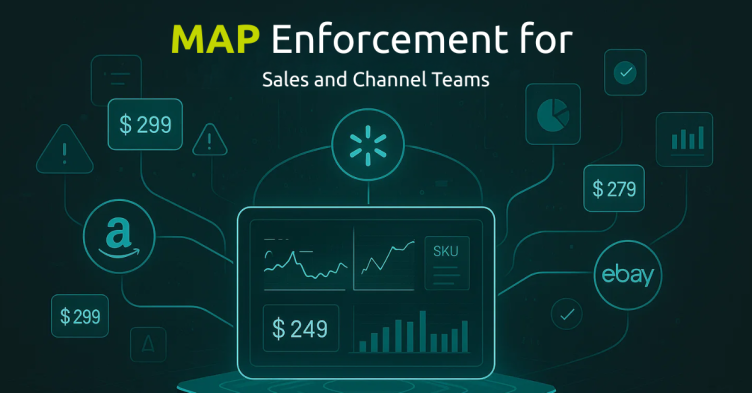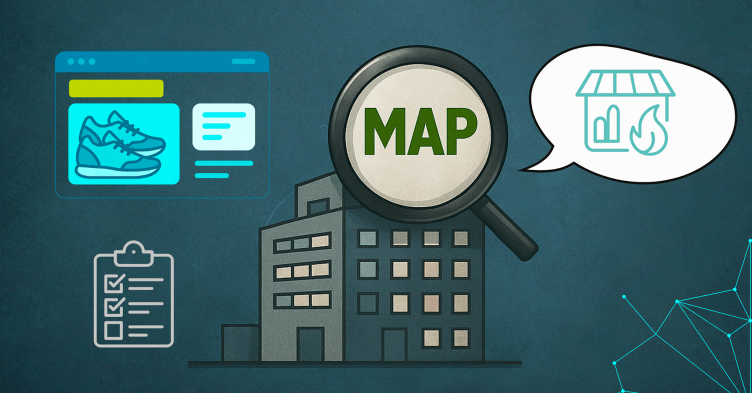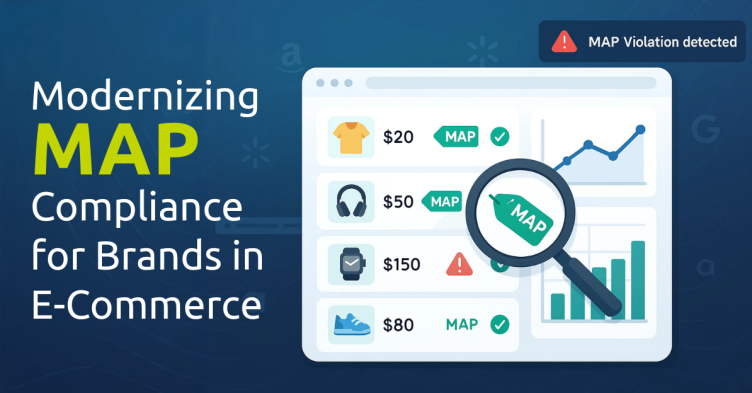Today, we will go through what a MAP violation is, why it is necessary to monitor MAP prices, and how to enforce map policy across e-commerce channels such as Google Shopping, Amazon, Walmart, Target, and direct sites in the US, Canada, and Mexico to ultimately reduce and stop MAP violations.
A MAP Policy is a pricing strategy implemented by manufacturers and brands to establish a minimum advertising price for their products. This ensures consistent pricing across different sales channels and protects the brand’s premium positioning from becoming a commodity. Unfortunately, the policy does not always stop retailers from advertising or selling products below the MAP, as they may offer discount coupons or codes to customers. The Minimum Advertised Price also specifies the scope of the policy on the Internet (IMAP), and in electronic (eMap) and physical stores.
Table of Content: Show
What Is MAP Policy and How Are MAP Violations Defined?
A MAP violation occurs when a reseller advertises a product below the minimum advertised price (MAP) established by the manufacturer, as outlined in the MAP Policy. These violations can undermine your brand value and disrupt fair market competition.
Why should you track MAP Violations across channels?
Numerous sellers advertise and sell your products online. Some sellers may be authorized, while some may not. Therefore, you must track MAP policy violations across all digital channels as a manufacturer or brand. This monitoring and enforcement protects your brand image among customers from rogue resellers and saves your loyal authorized retailers’ profit margins. Monitoring and identifying MAP violations and taking enforcement action against non-compliance stops unauthorized retailers and allows you to keep happy resellers while protecting your brand.
GrowByData helps you avoid costly MAP errors. Read “Top Mistakes Buyers Make When Purchasing MAP Monitoring Software.”
We know that Amazon, Target, eBay, etc. are some of the biggest online channels where anyone can join as a retailer and sell their products. A recent study done by the Harvard Business Review on manufacturers who use MAP policies found that unauthorized retailers violated the policies 50% of the time. Similarly, authorized retailers had a 20% violation rate. From this study, we can determine that not tracking MAP violations across all channels can potentially destroy your brand image and undermine your authorized retailers.
Normal consumer behavior is shopping for products on multiple online channels, comparing prices, and searching for the best deal before making a purchase. If a consumer sees your product or brand advertised at a very low price, it won’t be a great representation of your brand value, as the shopper might think your product is counterfeit or from the “grey market”. This degrades and destroys your brand value.
Today, retailers are equipped with cross-channel intelligence. They constantly analyze product prices of their competitors and reduce their own prices to win sales, thereby triggering a price war among the resellers and degrading your brand image in the process. Cross-channel MAP monitoring is key to preventing your brand from getting sold by resellers in their race to be the cheapest.
How to Track MAP Violations in Real-Time?
Manufacturers, brands, or wholesalers should monitor the prices of their products advertised by retailers on platforms like Google Shopping and Amazon. This helps ensure that retailers are following the set MAP policy and allows for necessary action against those who do not comply.
A powerful MAP monitoring software can help track retailers’ prices against manufacturer-set minimum advertised prices across multiple online channels. These tools can alert you to violations with visual evidence in PDF format to immediately report and take swift action against delinquent retailers for MAP policy enforcement.
GrowByData has prepared a MAP Violations Email Template for you to rightly reach out. We suggest you customize the content in the email as per your business and needs.
Learn how one leading retailer successfully enforced MAP and restored pricing consistency.
How to Enforce MAP Policy in the US, Canada, and Mexico?
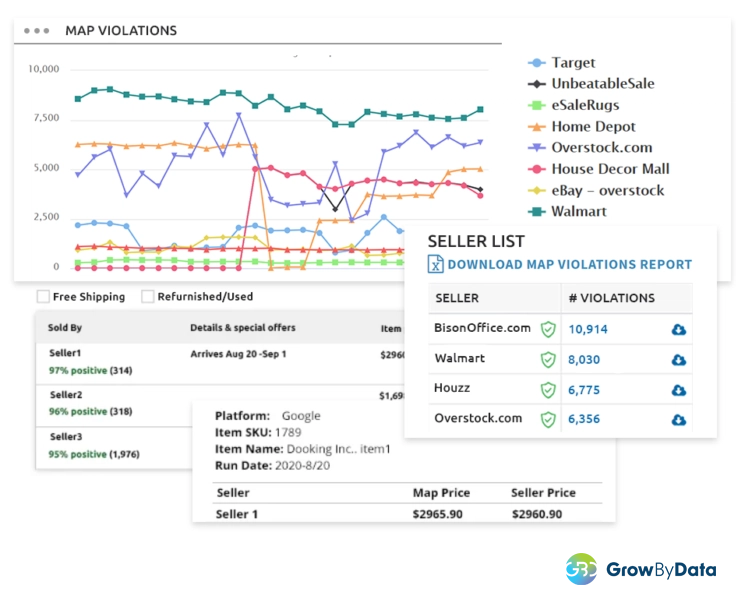
Map enforcement is the process of detecting all MAP violators across various marketplaces and advertising platforms, proclaiming the MAP policy, and, if needed, banning non-compliant retailers from selling your branded products. The ultimate decision to ban the seller is left to the brand and the marketplace. This means brands must use the MAP compliance monitoring tool to find violators and produce accurate visual evidence to swiftly report MAP pricing violations on whichever digital platforms they are found.a
Our GrowByData MAP Monitoring Software solves this retail industry problem of MAP issues on Google Shopping, Amazon, Walmart, and others in the US, Canadian, and Mexican markets. Along with our powerful price intelligence for your map pricing strategy, our price intelligence software provides these bonus features of addressing the following three key challenges around MAP violations monitoring and enforcement –
